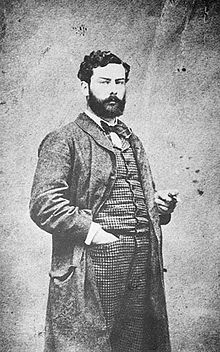Sisley
| Alfred Sisley | |
|---|---|

Alfred Sisley: 1882
|
|
| Born |
30 October 1839 Paris, France |
| Died | 29 January 1899 (aged 59) Moret-sur-Loing, France |
| Nationality | British |
| Education | Marc-Charles-Gabriel Gleyre |
| Known for | Painting |
| Movement | Impressionism |
Alfred Sisley (/ˈsɪsli/; French: [sislɛ]; 30 October 1839 – 29 January 1899) was an Impressionist landscape painter who was born and spent most of his life in France, but retained British citizenship. He was the most consistent of the Impressionists in his dedication to painting landscape en plein air (i.e., outdoors). He deviated into figure painting only rarely and, unlike Renoir and Pissarro, found that Impressionism fulfilled his artistic needs.
Among his important works are a series of paintings of the River Thames, mostly around Hampton Court, executed in 1874, and landscapes depicting places in or near Moret-sur-Loing. The notable paintings of the Seine and its bridges in the former suburbs of Paris are like many of his landscapes, characterized by tranquillity, in pale shades of green, pink, purple, dusty blue and cream. Over the years Sisley's power of expression and colour intensity increased.
Sisley was born in Paris to affluent British parents. His father, William Sisley, was in the silk business, and his mother Felicia Sell was a cultivated music connoisseur.
In 1857 at the age of 18, Sisley was sent to London to study for a career in business, but he abandoned it after four years and returned to Paris in 1861. From 1862, he studied at the Paris École des Beaux-Arts within the atelier of Swiss artist Marc-Charles-Gabriel Gleyre, where he became acquainted with Frédéric Bazille, Claude Monet, and Pierre-Auguste Renoir. Together they would paint landscapes en plein air rather than in the studio, in order to realistically capture the transient effects of sunlight. This approach, innovative at the time, resulted in paintings more colourful and more broadly painted than the public was accustomed to seeing. Consequently, Sisley and his friends initially had few opportunities to exhibit or sell their work. Their works were usually rejected by the jury of the most important art exhibition in France, the annual Salon. During the 1860s, though, Sisley was in a better financial position than some of his fellow artists, as he received an allowance from his father.
...
Wikipedia
